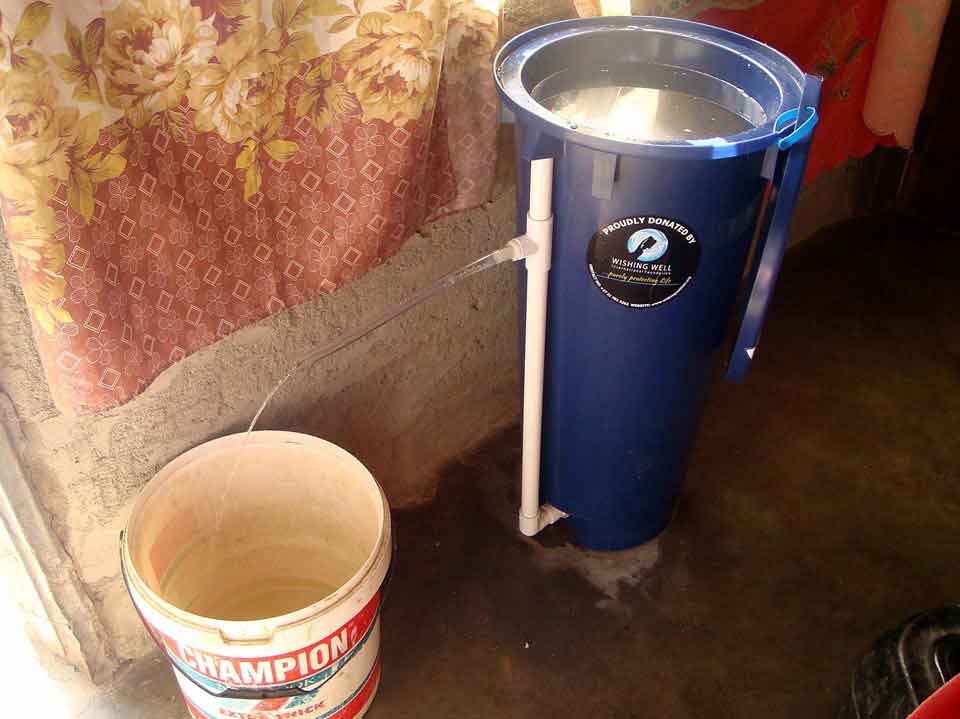WWIF to Use Amway’s New Biofoam Technology in its Filtration Systems
published 17 Aug 2015 by Joseph Gonzales
published 17 Aug 2015 by Joseph Gonzales
 Deerfield Beach, FL – August 17, 2015 – Since its launch in 2011, Wishing Well International Foundation (WWIF) has continually worked to provide safe, clean drinking water in developing areas. The Foundation has focused its attention on attracting sponsors and donors in order to complete more deployments and reach more people who lack clean water. Given the simplicity and low cost of the biosand water filters that are used during WWIF deployments, there has been little incentive to use any other type of technology or equipment to remove harmful contaminants from local water in these communities. A robust study of a new biofoam water filter, however, has proven to be a game-changing development in how water is filtered and decontaminated in rural areas. WWIF is proud and excited to announce that it will be one of the first organizations to utilize this technology in the field.
Deerfield Beach, FL – August 17, 2015 – Since its launch in 2011, Wishing Well International Foundation (WWIF) has continually worked to provide safe, clean drinking water in developing areas. The Foundation has focused its attention on attracting sponsors and donors in order to complete more deployments and reach more people who lack clean water. Given the simplicity and low cost of the biosand water filters that are used during WWIF deployments, there has been little incentive to use any other type of technology or equipment to remove harmful contaminants from local water in these communities. A robust study of a new biofoam water filter, however, has proven to be a game-changing development in how water is filtered and decontaminated in rural areas. WWIF is proud and excited to announce that it will be one of the first organizations to utilize this technology in the field.
The study, conducted by researchers at Michigan State University (MSU), evaluated a multi-barrier, low-cost water treatment technology, BlueQTM developed by Ada, Michigan-based Amway Corporation that consists of a flocculation stage, a newly-developed biofoam filter and chlorine disinfection. The results show that the water treatment system (WTS) powered by BlueQTM removed the biological contaminants in water with significantly higher effectiveness over existing biosand equipment. The new WTS achieved at least 99.99% (4 log10) reduction of viruses, 99.9999% (6 log10) for cysts and 99.999999% (8 log10) for bacteria,1 which positions it at a level that meets or exceeds both US EPA standards for microbial purifiers and the ‘Highly Protective’ category defined in the WHO Scheme.2.
Of the 884 million people in the world who lack access to clean water, the majority live in rural areas, collecting and transporting water from lakes, rivers or some other nearby source. The ingestion of contaminants in this polluted water is a leading cause of sickness in these areas, contributing to 3.5 million deaths each year. This risk is increased among low-income populations worldwide, particularly in sub-Saharan Africa and southeast Asia.3
One of the challenges for organizations such as WWIF has been to install filtration systems that will not only decontaminate the water, but will also continue to work in the field with minimal maintenance for several years. In addition to showing significant levels of removal, the new low-cost WTS reported in the MSU study has also demonstrated additional advantages as compared to existing biosand filters. Significantly lighter in weight, higher flow rate and easier installation and maintenance make it a potential solution to address this grand challenge.
The rollout of a simplified version of BlueQTM that features a flocculation stage and a biofoam filter will have a significant impact on WWIF deployments, particularly in next year’s 10-1-10 Africa Expedition. There is no plan to replace or phase out biosand filters, as they remain a very effective and proven filtration method in rural areas. The addition of a second filtration option creates distinct advantages during deployments, as some areas may require more stringent decontamination of local water.
“We are very eager to put this new technology into action,” said Guillermo Guzman, CEO and Founder of WWIF. “Amway has dedicated resources and worked behind the scenes for years to test and develop this. We’re very grateful they have invested the time and resources to literally revolutionize the cause for clean water. They truly exemplify corporate social responsibility.”
In addition to Amway, it is expected that many other companies will be taking part in WWIF’s 10-1-10 Africa Expedition. The May 2016 event provides a unique opportunity for donors and sponsors to participate in filter deployments across South Africa and Swaziland. Numerous sponsorship opportunities are available for those who wish to support the event and future deployments. Go to www.wishingwelliintl.org/10-1-10Africa for additional expedition details.
Click here to learn more about the Expedition and see the full list of available sponsorships.
Click here to view the full Expedition details.
Click here to view and download the registration form.
Thank you for your support.
Recent Comments
0 comments